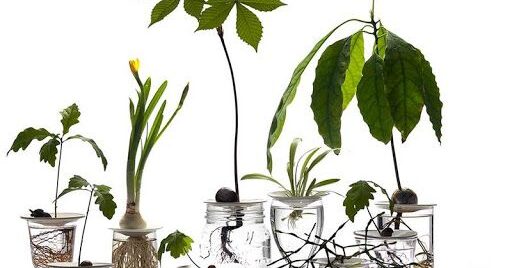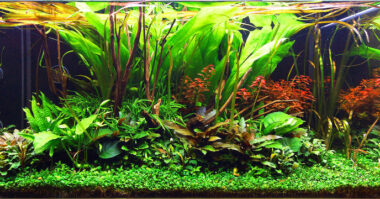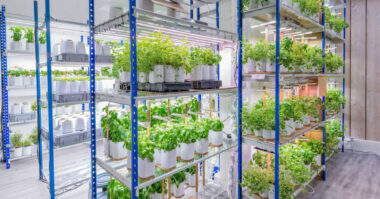Flowers are put in water, plants in a pot. This is the most common way. But some plants can also be grown in water! This method is trendy and shows another side of the plants.
However, flowering plants are more demanding, and they may not flourish in a “living room” hydro culture where the nutritional parameters are not precisely controlled. Except for the orchid, which is very well adapted to this type of hydroponics.
It is therefore not possible to grow all plants hydroponically, therefore, the majority of indoor green plants can be grown without land.
Contents
Hydroponics
Hydroponics means growing plants in water, not in expanded clay balls. One type of hydroponics involves rinsing the roots and putting the plant in water.
Anthurium is perfectly suitable for this type of cultivation. Rinse the anthurium roots well under warm running water so that all the soil is removed. Otherwise, they will rot, which should be avoided. Then fill a glass vase with water and place the anthurium in it. This way you will see the roots of the plant grow and watering becomes almost superfluous”. Beautiful and practical, then!
Which plants for hydroponics?
This approach works particularly well with aromatic herbs, placed on the kitchen window sill for example. Most of these herbs such as basil, rosemary, lavender and sage grow very quickly in water and produce new leaves every day.
But there are other plants that are at home in hydroponics. Specimens such as English ivy (a climbing plant that loves shelves), philodendron (with its thick shiny leaves), decorative nettle and begonias (for an explosion of color, even in winter).
The majority of the apartment green plants can be grown in hydroculture. The following list includes the most common ones, but is far from being exhaustive :
- anthurium
- aquarium
- dracaena
- aspidistra
- dieffenbachia
- ficus
- kentia
- kalanchoe
- ivy
- philodendron
- phalaenopsis (improperly called orchid)
- schefflera
- Norfolk pine (araucaria heterophylla)
- poinsettia
- sansevieria
- yucca
- etc.
How to make a plant take root in water?
- Cut the plant just under the leaf (near the bud), because that’s where the hormone for the roots is located.
- Use mineral water, not tap water, which is unsuitable. Mineral water is full of minerals that will nourish the plant.
- Fill the vase half full of water. (A bottle-shaped vase with a narrow neck will better hold the plant in place).
Maintenance tips
Just because you rarely need to water a crop in water doesn’t mean you don’t have to take care of it. Preferably use spring water, as it is rich in minerals, which stimulates the plant’s growth. At the same time, you also avoid lime deposits in your vase.
Change the water every four weeks and make sure there is enough water in the vase in the meantime. You can add a drop of houseplant fertilizer to the water so that the color of the leaves becomes even more beautiful. Place the plant in a bright place, but not in direct sunlight.
Is it necessary to use liquid fertilizer?
Once the root system is well-formed, you can add special hydroponic fertilizer. This is the guarantee of a vigorous, healthy plant, and this addition is essential for flowering plants. On the other hand, when you change the water containing fertilizer, do not throw it away in nature. The high concentration of minerals can disturb the ecosystem (green algae…). Throw it in the sink, because domestic water is treated before being discharged into nature.
Precautions to be taken in hydroculture
Of course, growing ivy or anthurium in hydroponics is very simple, but that doesn’t mean you can do just anything. Start by choosing a healthy and small plant, maximum 50 cm (we don’t yet grow trees without soil…). Then remove the plant from its pot and, very important, clean the roots. There should be no trace of soil left, as this will cause the plant to rot. You can also cut off the root tips with a clean pair of scissors.
Now that the plant is ready, it is necessary to install it in its substrate. If you chose the option 100% mineral water, very well. Place the vase in a rather warm and sunny place and change the water every month. Otherwise, a common solution is to use clay beads in a clay pot.
The beads hold the plant in place and gradually restore moisture to the roots. In this case, don’t forget to water the pot once a month. Then, change the beads every 6 months and rinse the roots and the pot thoroughly at this time to remove all bacteria.
Summary
Cultivating plants without soil is very simple and most indoor green plants can handle it well. On a neutral substrate, it is necessary to add liquid fertilizer as a complement.
The technique which consists in placing a plant in a transparent vase filled with mineral water is very appreciated, because of its aesthetic asset. One benefits then from the beauty of all the plant, from the point of the leaves to the splendid root system which blooms in water.








